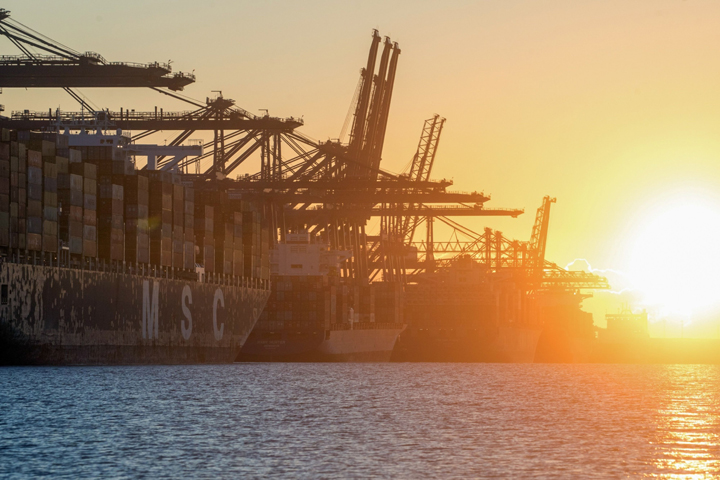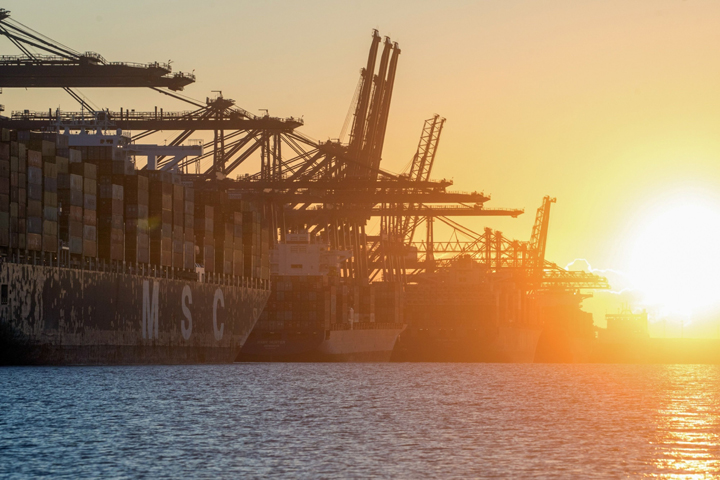
SHIPPING delays and local quarantines prevented the country’s external trade performance from doing better this year, according to economists and the National Economic and Development Authority (Neda).
The double-digit growth posted by both exports and imports in August 2021 may have just been a “dead cat bounce” considering that trade performance last year contracted deeply.
Exports grew 17.6 percent in August 2021 from a contraction of 12.7 percent in August 2020 while imports grew 30.8 percent from a contraction of 17.5 percent last year. (See: https://businessmirror.com.ph/2021/10/12/phl-exports-and-imports-post-double-digit-growth-in-august-psa/)
“[The cause is] probably a multiple of reasons,” Socioeconomic Planning Secretary Karl Kendrick T. Chua told the BusinessMirror. “[This includes] both domestic—our higher quarantine—and international logistics issues.”
Unionbank Chief Economist Ruben Carlo O. Asuncion agreed with Chua and said in August, the country again imposed a strict lockdown to prevent the spread of the Delta variant.
The emergence of the more transmissible variant of Covid-19 has also affected global trade as many economies became more conscious of the threat of the virus, Asuncion told the BusinessMirror.
Shipping delays
Ateneo Center for Research and Development (ACERD) Associate Director Ser Percival K. Peña-Reyes agreed and said the trade performance could have been better if not for shipping delays.
Peña-Reyes said on Tuesday that shipping delays have made it difficult to move goods around. This has also increased the cost of shipping fees that ultimately increase production costs.
“[On whether a triple-digit growth may have been possible this year without shipping delays] that, I cannot say for sure, but it wouldn’t be in as bad a shape as what we see right now,” Peña-Reyes said.
Asuncion said with more economies recovering next year, greater pressure will possibly be exerted on global supply.
However, Chua said he only hoped the recovery of more economies will not worsen the shipping delays next year.
As for Peña-Reyes, he said, the fate of the country’s trade performance will largely depend on how the government and the private sector will manage the crisis.
“I think the pressures on the supply chain as more economies recover will rise and may cause further delays. I just hope the global supply can cope and dodge unnecessary pressures,” Asuncion said.
“I think in terms of policy it [government] would provide for better infrastructure and facilitate the development of relevant infrastructure for local supply chains to flow flawlessly and minimize governmental friction that drag the smooth flow of the factors of production,” he also said.
In order to prevent shipping delays, the private sector must be proactive and economize their trips to ensure they have sufficient inventory next year, Peña-Reyes said.
In terms of the government, Peña-Reyes said it is important that it “reduce red tape, do away with unnecessary hurdles.”
This includes fully implementing the National Single Window to facilitate clearances needed for import shipments.
“We need proactive thinking in anticipation of delays. Stockpile in anticipation of greater economic activity—hopefully—during the last quarter of the year and months leading up to elections,” he added.
An Asian Development Bank (ADB) brief, released on Tuesday, stated that trade financing can help facilitate global trade. Based on a survey it conducted, the global trade finance gap increased to $1.7 trillion during the Covid-19 pandemic in 2020 from $1.5 trillion in 2018.
ADB said more than half of the surveyed firms identified that greater access to finance and public sector support are keys to the path to post-pandemic recovery.
Given this, ADB said strengthening Public-Private Partnerships are needed to boost trade financing. It noted that the government alone could not provide the needed support.
For his part, Chua said if needed, the government stands ready to “design a suitable program.” This, he said, can be done in consultation with the Bangko Sentral ng Pilipinas and the Department of Finance, among others.
However, Chua stressed that the “government is not a financier. That is the financial system’s role.”
Markets
Based on the data from the Philippine Statistics Authority (PSA), the country’s top export and import market in August was the People’s Republic of China.
Exports to China amounted to $1.05 billion or a share of 16.2 percent to the total exports in August 2021, while imports from Beijing were valued at $2.36 billion or 23.5 percent of the total imports during the period.
Other top export markets of the country were the United States of America (USA) amounting to $1.02 billion or 15.8 percent of the total; and Japan, $940.46 million, 14.5 percent of the total.
PSA said the list of top export markets included Hong Kong with shipments amounting to $930.83 million or 14.4 percent of the total; and Singapore with $392.12 million or 6.1 percent of the total.
Meanwhile, top import sources of the Philippines included Japan with shipments amounting to $920.67 million or 9.2 percent of the total followed by the Republic of Korea with $796.89 million or 7.9 percent of the total.
The data also showed the country imported from Thailand $651.92 million worth of goods, accounting for 6.5 percent of the total; and the US with $645.57 million or 6.4 percent of imports in August 2021.

